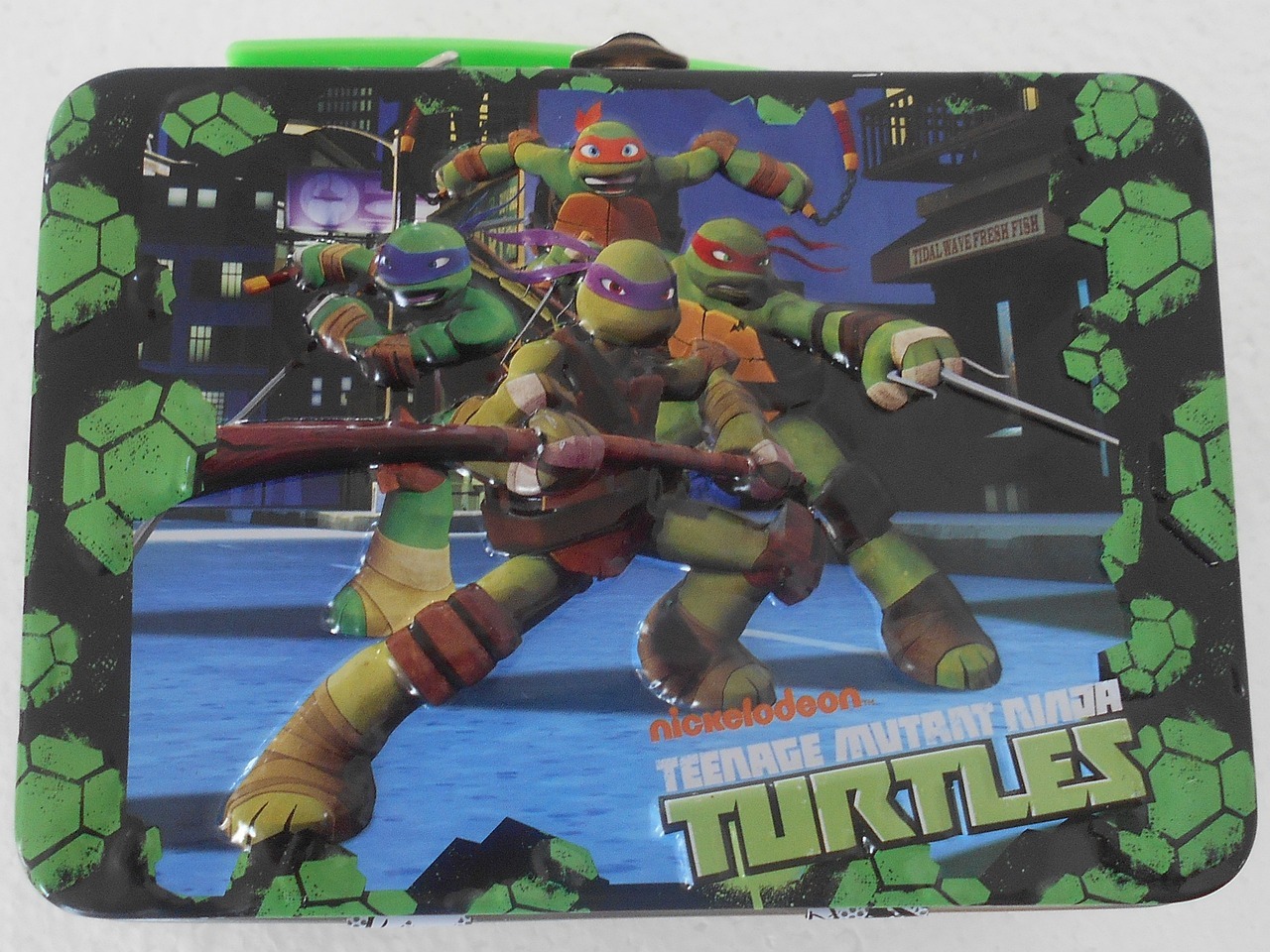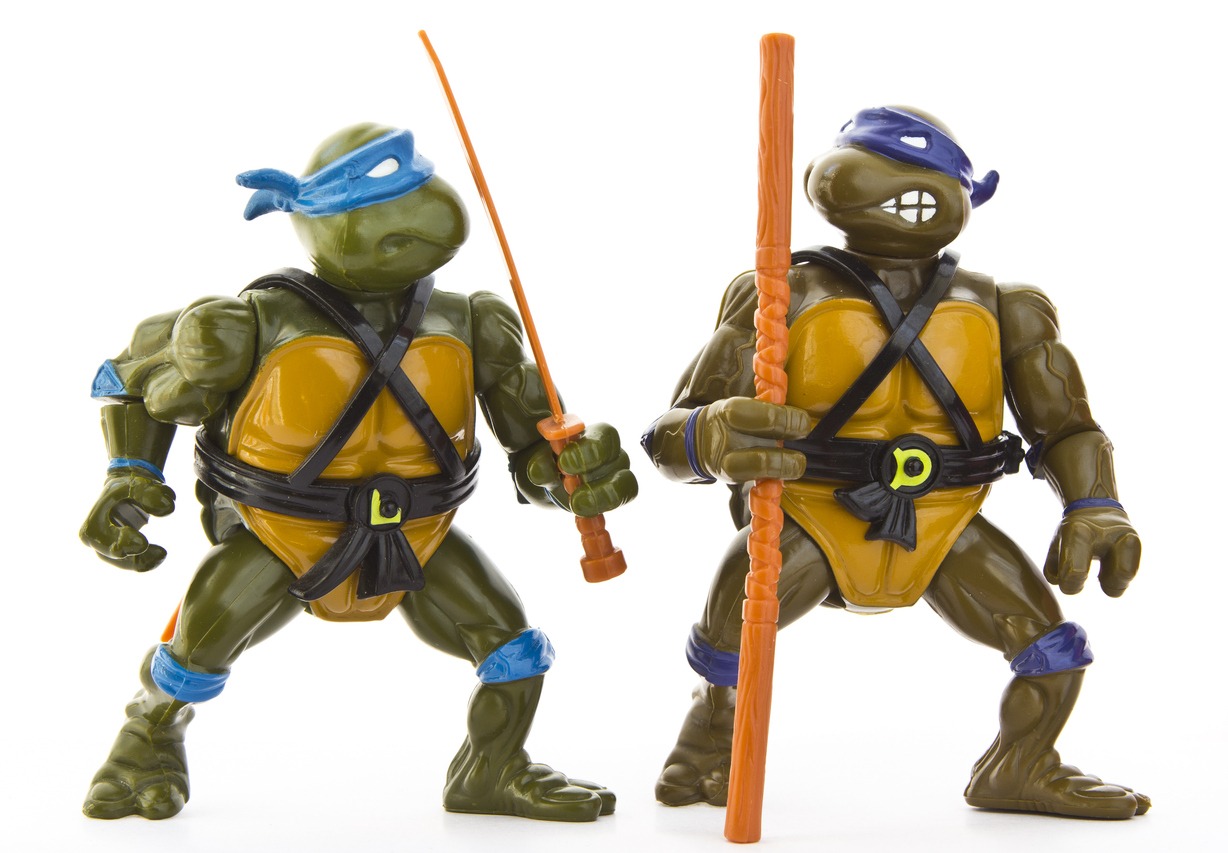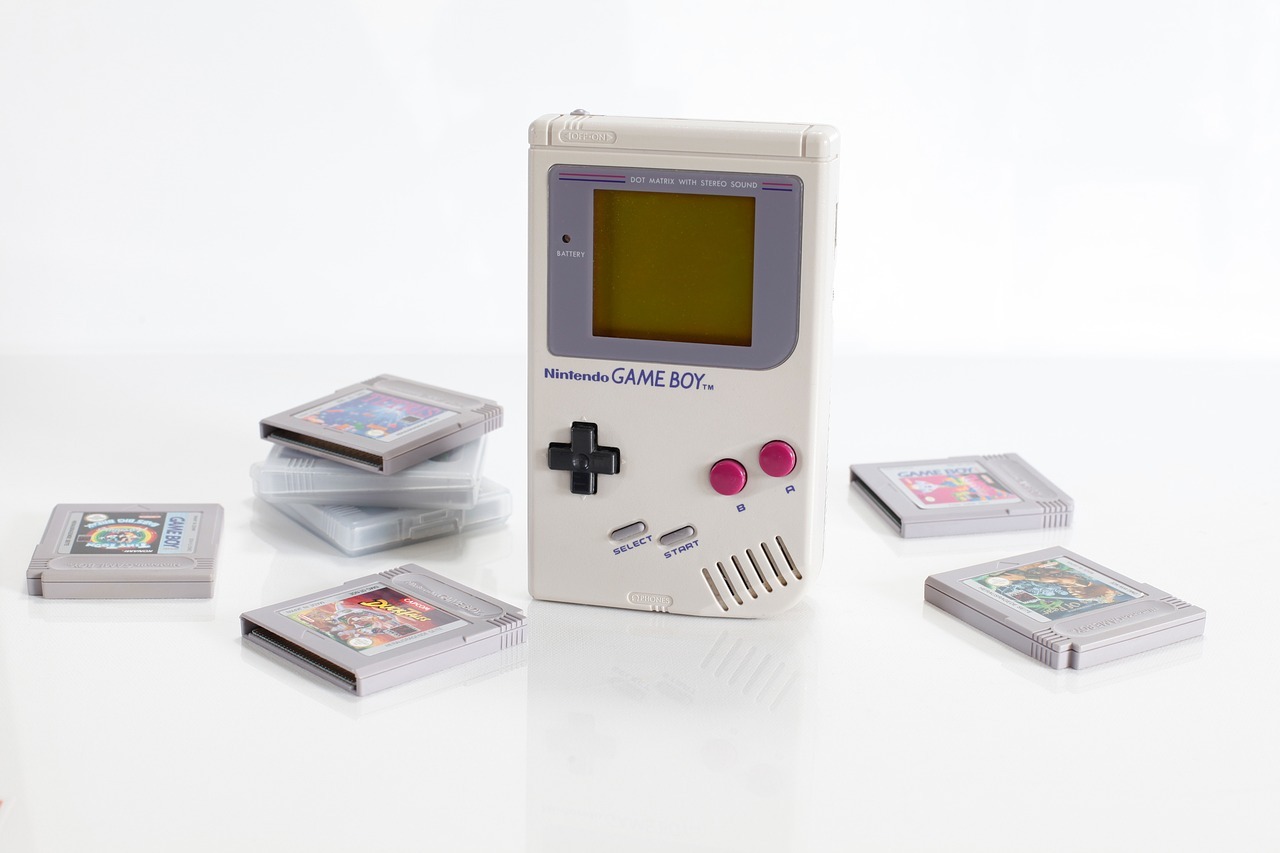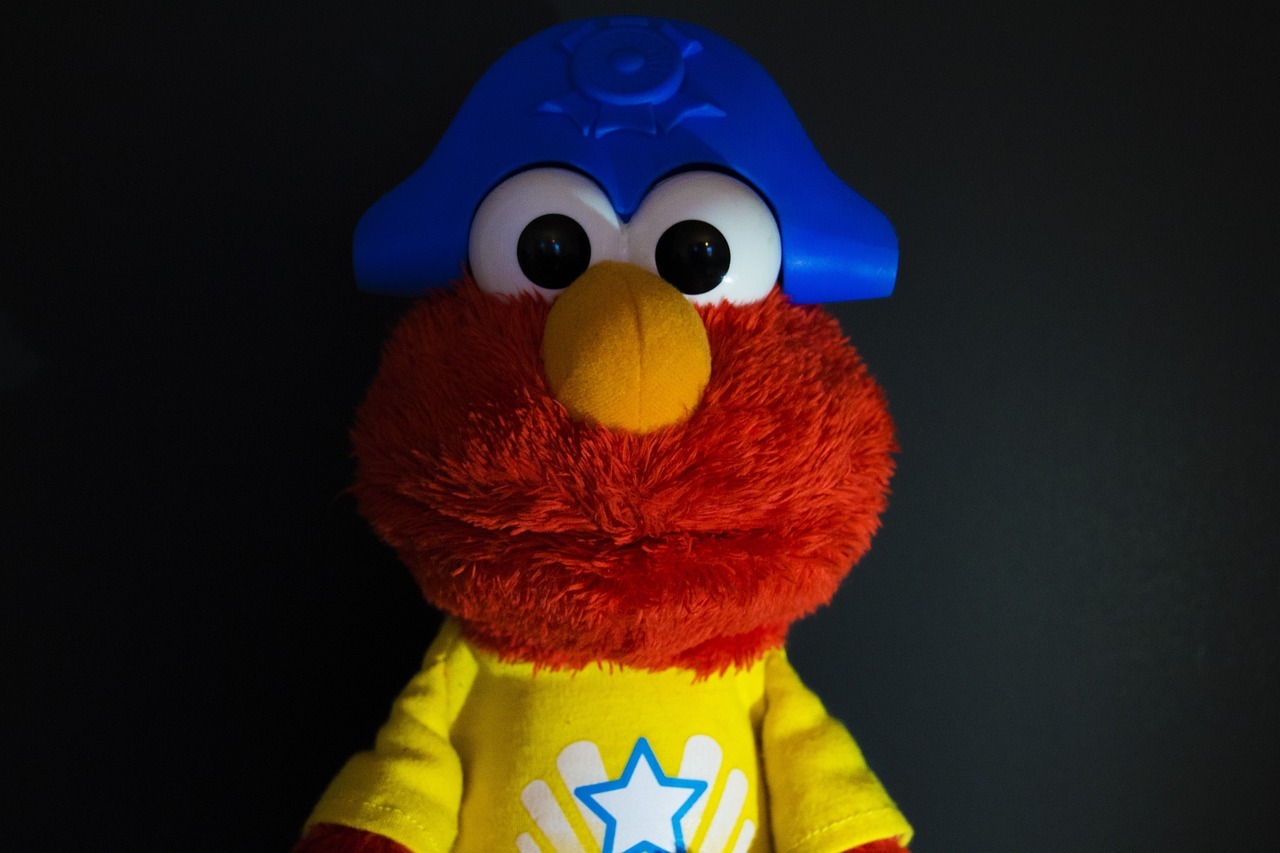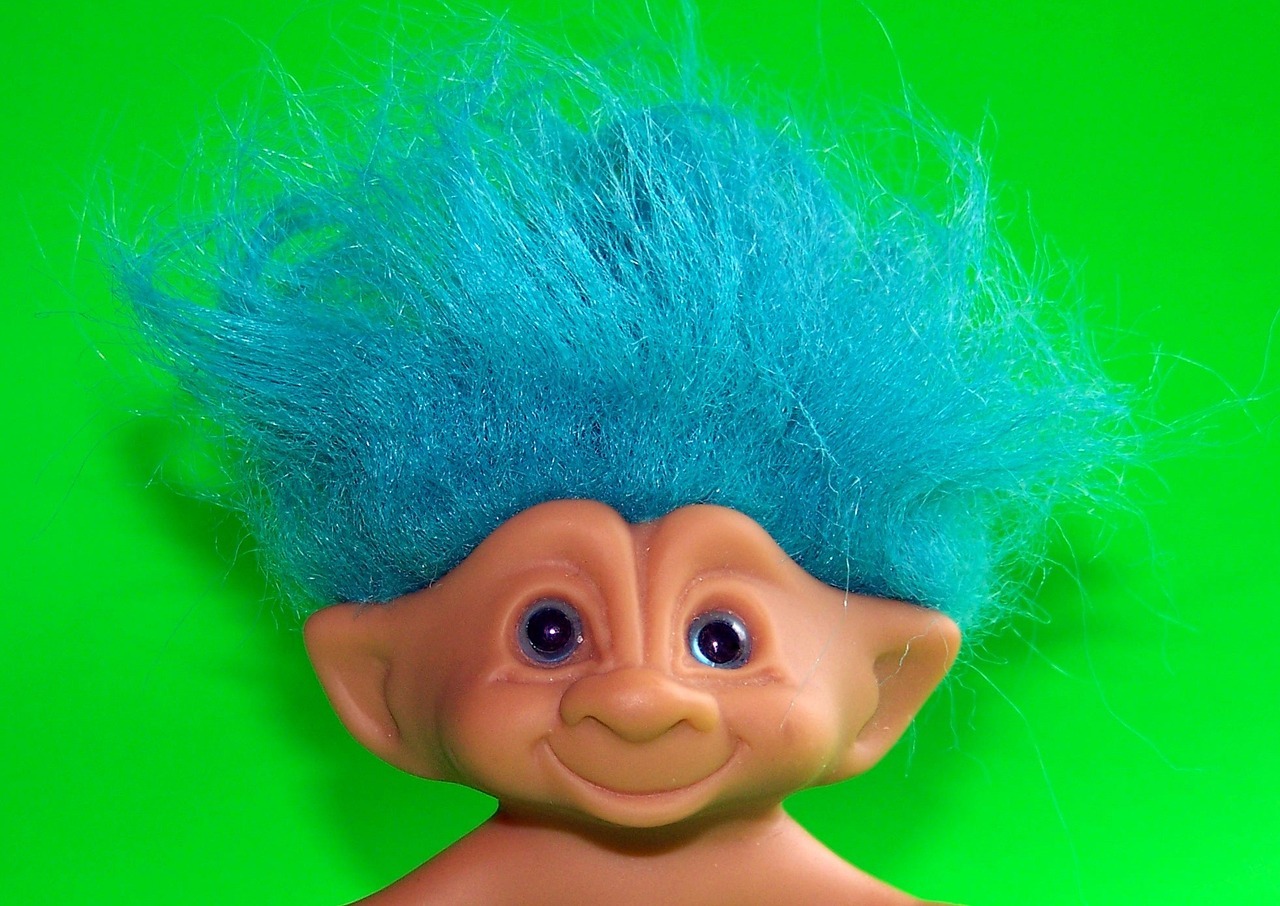The 90s was an era that was filled with things that are extreme. Some of these extreme things include extreme sports like skateboarding and snowboarding, extreme food like Taco Bell’s Extreme Nachos and Snickers X-Treme, and even extreme drinks like Surge and 7-Eleven’s Xtreme Gulp. Aside from extreme things, the 90s was also the period when some of the best toys were created or became very popular. Here is a list of the top pop culture toys of the 90s.
Teenage Mutant Ninja Turtles
A popular media franchise of the 90s is the Teenage Mutant Ninja Turtles, which follows the story of four anthropomorphic ninja turtles named Leonardo, Michelangelo, Donatello, and Raphael as they stop the nefarious plans of Shredder, the leader of a criminal organization called the Foot Clan. Although the media franchise became popular in the 1990s, the Teenage Mutant Ninja Turtles were actually created in 1984 by two comic book artists Kevin Eastman and Peter Laird. [1]
Kevin Eastman met Peter Laird in 1983 while looking for an underground newspaper where he could publish his comic book creations. During that time, Laird was earning just ten dollars for each illustration that he submitted to a local newspaper in Dover, New Hampshire. For a few months, Eastman and Laird collaborated on different comic book projects and submitted them to underground newspapers and publications.
In November 1983, Eastman drew an anthropomorphic masked turtle that was holding a pair of nunchucks. Eastman called his drawing “ninja turtle,” and when Laird saw it, he added the words “teenage” and “mutant” to the drawing’s name. Seeing the potential in the character they created, Eastman and Laird created a story based on the character and three more ninja turtles. Then, the pair self-published a black-and-white comic book called “Teenage Mutant Ninja Turtles” in May 1984. The comic book was published under Mirage Studios, an independent publication created by Eastman and Laird, and was established from the $1000 loan that Eastman got from his uncle.
Teenage Mutant Ninja Turtles would go on to become one of the most popular indie comics during the late 1980s. In 1987, Eastman and Laird gave the license to produce Teenage Mutant Ninja Turtles or TMNT action figures to Playmates Toys, a toy company based in Hong Kong. Playmates Toys produced TMNT toys from 1988 to 1997, and in just four years of production, the company was able to get $1.1 billion in sales for those toys alone.
If you want to get your hands on action figures that look similar to the retro designs, you can buy the two bundles below:
- Teenage Mutant Ninja Turtles Classic 4-Pack Figure Bundle
- Teenage Mutant Ninja Turtles Classic Villains 4-Pack Figure Bundle
Power Rangers
Power Rangers is another media franchise that was quite popular in the 1990s, and this one, in particular, is focused on the “Super Sentai” theme wherein heroes can morph or transform into a stronger version of themselves that are wearing costumes in different colors. These Super Sentai heroes usually wear skin-tight spandex suits that are color-coded, as well as helmets that have the same color as their suits and have opaque visors. Although the Super Sentai theme has been around since the 1970s in Japan, it was in the 1990s when the same theme was applied to a live-action show in the United States, and this show is the Power Rangers.
Even before the creation of the Power Rangers, there were already plans on making an American version of Super Sentai shows during the 1970s. In the said time period, Marvel Comics and the Toei Company (who is responsible for creating popular Super Sentai shows) formed a partnership wherein they can exchange concepts and showcase them to their target market, with Marvel Comics focusing on American audiences while the Toei Company focuses on the Japanese audiences.
Toei Company adapted the popular Marvel Character Spider-Man and recreated him as a Super Sentai character in a live-action television series. The show, which was aptly named “Spider-Man,” aired from May 17, 1978, to March 14, 1979. The Super Sentai show starring Spider-Man was a massive success, and it even inspired one of the staples of Sentai shows: the use of a giant robot to fight a giant enemy.
Unfortunately, the same success wasn’t captured by Marvel Comics in the United States, as no production company wanted to produce a Super Sentai show for American audiences since they are unfamiliar with the theme and concept of Sentai characters. There was even a pilot episode of an American Sentai show called “Bio-Man” that was produced in 1986 by Haim Saban, an investor and musical composer. [2] The pilot episode was rejected by different television stations.
Luckily, in 1992, a television channel called Fox Kids took a chance at the Super Sentai theme and enabled Saban to produce and air “Mighty Morphin Power Rangers,” which would be later known simply as “Power Rangers.” The Power Rangers franchise would spawn numerous television shows and films, and even after the 90s, the franchise is still quite popular among adults that grew up with the franchise and children who experienced the Power Rangers hype for the first time.
Because of the popularity of the franchise, there have been numerous action figures of the Power Rangers and their villains that were produced and sold by different toy companies. If you want to get figures of the original Power Rangers, check out the list below:
- Power Rangers Auto Mighty Morphin Red Ranger Action Figure
- Power Rangers Auto Mighty Morphin Green Ranger Action Figure
- Power Rangers Auto Mighty Morphin Blue Ranger Action Figure
Tamagotchi
Tamagotchi is a portable toy that houses a digital pet that kids, teenagers, and adults can care for so that it can get bigger and healthier. The Tamagotchi toy was first released in Japan on November 23, 1996, and it was later released in the United States on May 1, 1997.
After releasing in the United States, it quickly became one of the biggest toy fads of the late 1990s and early 2000s, and because of the craze for Tamagotchi toys, the products’ manufacturer, Bandai, was able to sell millions of Tamagotchi units in Japan, the United States, and other countries where the toys were exported.
The Tamagotchi toy was invented by Akihiro Yokoi, a Japanese toy designer and the then-president of a creative firm called Wiz Co., who was struck with inspiration after seeing an advertisement where a boy wasn’t able to bring his pet turtle for his family’s vacation. So, Yokoi came up with the idea of taking care of a virtual pet that you can bring anywhere and everywhere with you. [3]
Yokoi then approached Aki Maita, who was working for the marketing department of Bandai. During a meeting with Maita and several employees of Wiz Co., Yokoi detailed his ideas for a virtual pet that is stored inside a wearable wristwatch called a “Tamagotchi,” a mash-up of the Japanese words “tamago” (meaning “egg”) and “uotchi” (meaning “watch”). However, the design team for the product would change the wristwatch to a keychain for better portability. Even if the design was changed to a keychain, the “Tamagotchi” name stuck with the product.
As of March 2021, there are more than 83 million units of Tamagotchi that were sold around the world by Bandai. Today, Tamagotchi is still popular among kids, teens, and even adults that grew up taking care of their virtual pets in the 1990s.
Check out these three Tamagotchi toys that you can buy and play with:
Beanie Babies
Beanie Babies are a line of stuffed toys that were created by H. Ty Warner, a businessman who founded his own toy company called Ty Inc. in 1986. True to their name, Beanie Babies are stuffed toys that are stuffed with plastic pellets that are often referred to as “beans,” and this stuffing made them very different from the usual stuffed toys that have a soft stuffing made of cotton. Although Beanie Babies can come in different shapes or forms, it is the teddy bear variants that are popular among kids and collectors.
Beanie Babies were introduced by Ty Warner in 1993 during the World Toy Fair in New York City. [4] When the stuffed toys were received positively, Ty Warner decided to begin manufacturing the toys in 1994, and the first batch of Beanie Babies was sold in Chicago toy stores. While there were plenty of Beanie Babies that were sold in 1994, the toys were only produced in small quantities and were distributed to small toy stores and gift shops.
Although Beanie Babies were selling relatively well in stores during the mid-90s, the sales were still slow due to the fact that only small quantities of the toys were produced and it was only given to small toy stores. In 1995, several retailers refused to buy bulk packages of Beanie Babies because of their low sales figures.
Interestingly, instead of pushing more quantities of Beanie Babies to gain more profit, Ty Warner decided to further restrict the number of Beanie Babies his company produced. Warner even “retired” some of the Beanie Babies characters after weeks or months of being sold in stores. Surprisingly, these choices made the Beanie Babies toys more popular, as more and more people are buying the toys for collecting purposes since there are only a few quantities available and some toys may not be in production after some time. The scarcity of Beanie Babies led to the craze of collecting rare stuffed toys in the United States.
In 1999, Ty Warner’s company stopped producing Beanie Babies. But due to popular demand, the company restarted the production of Beanie Babies in 2000. From then on, bigger quantities of Beanie Babies were produced, and the resale value of the toys began to decrease. While the value of Beanie Babies dwindled for collectors, the bigger quantity of Beanie Babies enabled more people to own the stuffed toys.
Here are three of the most popular Beanie Babies toys that you can purchase online:
Nintendo Game Boy
The Game Boy was Nintendo’s first successful handheld game console and is considered by many to be one of the most important consoles in the video game industry. Nintendo is a Japanese video game company that developed the popular NES (Nintendo Entertainment System) and released it in 1983 in Japan and in 1985 in North America. Due to the success of the NES, Nintendo was able to have the budget to experiment on the next consoles that they will release. One of those experiments was the handheld video game console that would eventually become known as the Game Boy.
Years before the release of the NES, specifically in the early 1980s, Nintendo had already developed and released different handheld gaming devices that were a part of the “Game & Watch” series. The Game & Watch series had segmented LCDs that were pre-printed with an overlay, so each device in the series can only play one game. After the success of the NES, Gunpei Yokoi, who was responsible for creating the Game & Watch series, told the then-president of Nintendo Hiroshi Yamauchi that he could create a handheld console that can have interchangeable games.
Development for Yokoi’s next console began in the late 1980s, with the console having an internal code name “Dot Matrix Game” or DMG because of how it uses a dot-matrix display so that everything that is shown on the screen can be changed, unlike the Game & Watch devices that have a fixed screen with segmented LCDs. Yokoi decided on designing the DMG as a light, portable, and durable game console that has a great library of games featuring popular Nintendo characters like Mario from Super Mario Bros. and Link from The Legend of Zelda.
Unfortunately, the DMG was received negatively by those who saw and tested the console within the company. What these employees didn’t know is that the console would become one of Nintendo’s biggest successes due to one particular video game: Tetris.
Henk Rogers, a Dutch video game designer, brought Tetris to Nintendo of America in hopes of porting the game to Nintendo’s newest console. The then-president of Nintendo of America, Minoru Arakawa, was so impressed with the game that he allowed it to be bundled with the Game Boy, which was then released in 1989. [5]
Thanks to the idea of bundling Tetris with the Game Boy, both the game and the console became instant classics among video game enthusiasts. The original Game Boy would then inspire the creation of successors like the Game Boy Pocket, the Game Boy Color, and the Game Boy Advance.
Although the Game Boy has been discontinued, you will still be able to find pristine and working units of the Game Boy today, although they have a high resale value. If you don’t want to pay a lot of money for these original Game Boy consoles and want to just play the games made for them, you can just subscribe to Nintendo Switch Online, a subscription service for the Nintendo Switch console that allows you to connect the console online or play various retro games from past Nintendo consoles, including the original Game Boy. To get a subscription, you can sign-up through Nintendo’s website, or you can get 12-month membership codes for these two games:
- Tetris 99 + 12-Month Nintendo Switch Online Individual Membership
- Super Mario Maker 2 + 12-Month Nintendo Switch Online Individual Membership
Magic: The Gathering
Magic: The Gathering is one of the most popular and successful card games in history, and as of December 2018, the game had more than 35 million players. The game’s mechanics revolve around the use of land cards to summon creatures or to cast spells, which can then be used to destroy the enemy’s creatures and artifacts or to inflict damage on the enemy.
Magic: The Gathering was created by Richard Garfield, who had a great fondness for different kinds of games as a kid and as a teenager. One of the games that he liked playing during his younger days was Dungeons & Dragons, although he didn’t particularly like the books that come with different sets and boxes of the game. He deemed these books “dreadfully written” because of how difficult it is to understand the rules of the game through the books. [6]
So, he was inspired to create a new game that has simpler rules that are easier to understand and play. The game he created was called “Five Magics,” which features five elemental magics represented with different colors like white, blue, black, red, and green. Garfield would continue to improve or refine the game, although he didn’t have the intention of publishing it.
The game “Five Magics” would serve as the inspiration for “Magic: The Gathering,” as the latter also featured five elemental magics that classify cards into five different groups or colors. Before the creation of Magic: The Gathering, Garfield first introduced the idea for “Five Magics” to Peter Adkinson, who is the founder of the gaming company Wizards of the Coast. Adkinson liked the idea and wanted to publish it because of its portability (since it uses cards instead of boards).
Before the release of the game, there were debates among the designers and other people within Wizards of the Coast as to what the official name would be for it. The working name for the game was “Magic,” but it was deemed too simple or generic for people to remember it. Another name that was suggested was “Mana Clash,” and while the said name was appealing, many of those involved in the design of the game were more attached to the original name, “Magic.” So, in order to make the name less generic, they decided to call it “Magic: The Gathering.”
Magic: The Gathering was officially released on August 5, 1993. In just two months, Wizards of the Coast have already sold out their initial supply of 10 million cards due to the massive popularity of the game and high demand for the cards. To keep the game fresh, Wizards of the Coast would often release expansion sets that come in with new cards that have the same or better mechanics than the older cards.
If you are new to the world of Magic: The Gathering, you should buy the Starter Kits that Wizards of the Coasts sells, as they are perfect for new players to understand the different rules and mechanics of the game. Here are two of the best Starter Kits that you can get to get started with Magic: The Gathering:
- Magic: The Gathering The Lord of The Rings: Tales of Middle-Earth Starter Kit
- Magic: The Gathering 2022 Starter Kit
Tickle Me Elmo
Tickle Me Elmo is a stuffed toy for children that was developed by Tyco Preschool, a division of Tyco Toys, a toy company that would eventually be acquired by Mattel in 1997. Tickle Me Elmo is based on the Muppet character named Elmo, who appeared in the children’s television show titled “Sesame Street.” The toy is unique compared to most stuffed toys, as it has electronic parts that allow the toy to shake, vibrate, and produce giggles through a small speaker whenever its fur is touched or tickled.
Tickle Me Elmo was released in 1996, and by the Christmas season of the said year, the toy became a fad among kids. [7] Tyco Toys was not prepared for the fad, so the demand became high while the supply was fairly low. The demand for the toy became so high that there were people that were reselling it for a lot more than its $29 MSRP
Eventually, Tyco Toys (and Mattel after the acquisition) was able to satisfy the demand for Tickle Me Elmo. Today, you will still be able to buy a Tickle Me Elmo doll, although it comes in the form of the Tickliest Tickle Me Elmo, which can move its feet and fall over while laughing.
Bop It!
Bop It! are toys that can be played by following commands that are recited or issued through the voice recordings produced by the built-in speaker. The voice recordings require players to twist cranks, spin wheels, pull handles, and push buttons on the toy, and these recordings would increase in pace or speed until the player fails to do an action on time or fails to do the required action.
The concept for Bop It! was first patented by a toy designer named Dan Klitsner, who is also the founder and creative director of a toy licensing and inventing company called KID Group LLC. After patenting the toy, Klitsner would then sell the license to Hasbro, one of the biggest toy companies in the world. The Bop It! concept was then improved upon by Hasbro’s design team. Over the years, there are numerous mechanics and parts that were added to the Bop It! toy, and these additional features allowed the creation of variants like Bop It! Extreme.
If you want to play Bop It! with friends or family members, here are three variants that you should check online before purchasing:
- Hasbro Gaming Bop It! Classic Game
- Hasbro Gaming Bop It! Extreme Game
- Hasbro Micro Series Bop It! Game
Slinky
The Slinky is a spring toy that was invented in the 1940s by a naval engineer named Richard T. James. The modern version of the Slinky is composed of a flexible and long piece of plastic that is bent and rotated to form a helix that looks like a compact spiral staircase. Because it also looks like a spring, the Slinky can often bounce on a surface. Players of the Slinky can perform various tricks using the toy, like bouncing it from one hand and another, bouncing it from the floor to the hand, and other difficult tricks.
The Slinky was developed and invented in 1943, and it was introduced by Richard T. James at a Gimbels department store in Philadelphia in 1945. [8] The Slinky became a hit among kids and teenagers during the 1940s, and the success of the toy allowed Richard T. James and his wife Betty to create a company called James Industries. Throughout the 1950s, the company was able to produce variants of the Slinky, including the Slinky Worm and the Slinky Dog.
By the 1990s, the Slinky was considered as one of the most popular toys. Despite relatively good sales, Betty James decided to sell her and her husband’s company James Industries to Poof Products, Inc., a business known for manufacturing foam sports balls. In 2003, Poof Products changed its name to Poof-Slinky, Inc. The Slinky brand would then be sold to the toy company Just Play in July 2020. If you want to buy a Slinky toy, you can buy The Original Slinky Toy Pack that contains one Giant Slinky, one Classic Slinky, and one Slinky Junior.
Talkboy
The Talkboy is a handheld electronic device that can produce sounds and can record voices. The Talkboy was manufactured in the 1990s by Tiger Electronics, a toy and video game company that was known for producing Furby, an electronic furry toy that was popular in the 2000s. The handheld electronic device was produced as a result of a promotional tie-in with Home Alone 2: Lost in New York, a film that premiered in 1992 and served as a sequel to the iconic Christmas film Home Alone which was released in 1990.
A fictional version of the Talkboy was used in the Home Alone sequel, and because kids wanted to play with the same toy, Tiger Electronics was tasked to create a working version of the device. The original release of Talkboy in 1992 didn’t have the voice changer feature that was present in the fictional version of the film. However, Tiger Electronics launched the Deluxe model in 1993 that featured the voice changer and recorder. The Talkboy and the Deluxe Talkboy were produced until 1999.
Crocodile Dentist
Crocodile Dentist is a tabletop game that was published by Milton Bradley (known for publishing popular board games like Battleship and The Game of Life) in 1990. The objective of the game is to see which players will be able to push down each tooth of the crocodile before its mouth shuts. However, in the early versions of the games, players would have to remove each tooth with a pair of pliers instead of pushing down the tooth.
The game was invented by toy designer Robert B. Fuhrer during the late 1980s. Fuhrer and his design team tweaked the length of the crocodile’s mouth and the speed of its lunging motion several times in order to avoid injuries. In addition, his team also suggested that players should use a pair of pliers to pluck the tooth out in order for children to not be afraid that the crocodile will bite their fingers. While the pliers were kept in the original version, the modern version didn’t include them in order to make the game more exciting for players. You can still play the said game today by buying the Hasbro Crocodile Dentist Kids Game.
Pogs (Milk Caps)
Pogs, also known as milk caps, is a children’s game that is played using circular and flat milk caps that are made of cardboard. True to its name, milk caps was a game that was possibly invented by people through the use of milk caps that are used to cover milk bottles to avoid the milk from spoiling too fast inside the bottles. It is believed that the game originated in Maui, Hawaii during the 1920s or 1930s, and by the 1940s, there were already kids and teenagers in Hawaii that collected milk caps in different sizes, colors, and designs.
Pogs became a worldwide fad when it was revived in the 1990s by a teacher and guidance counselor named Blossom Galbiso. [9] It was in 1991 when Galbiso introduced the game to the kids in the school where she was teaching, Waialua Elementary School. Then, the kids started spreading the game to other kids, and thus a fad was born. By the mid-1990s, the Pogs fad peaked, and children around the world started collecting and playing with Pogs. There were even McDonald’s Happy Meals in the 90s that came with Pogs.
Trolls
Trolls are plastic dolls that have up-combed hair in different colors and designs. These Troll dolls have been around since the late 1950s, but it was in the 1990s when the dolls truly became one of the most popular and timeless toys. The inventor of Troll dolls was Thomas Dam, a Danish woodworker who got the inspiration for the dolls from the trolls in Scandinavian folklore.
The Trolls doll was created in 1959 as Dam’s gift to her daughter Lila. [10] Dam’s daughter then showed the wooden doll to her friends, and kids in the Danish town of Gjøl started to like the doll. Soon after, Dam sold Troll dolls to the kids in the town and it eventually became known to other towns and cities in Denmark.
Due to the success of the Troll dolls, Thomas Dam was able to build his own company and produced Troll dolls that can be sold worldwide. Troll dolls were produced by Thomas Dam’s company from 1959 to 2013, which is the year when a production company called DreamWorks Animation acquired the intellectual property for the Troll dolls.
Most of the toys that were invented and popularized in the 1990s are still popular today, and it is not really surprising considering their cultural impact and their significance in the history of toys. You can still buy some of the toys we mentioned above, although most of them have been upgraded with different features so that they will be much more fun to play with.
References
[1] Francisco, E. (2019, November 23). How “Toys that Made Us” Reunited the Feuding Creators of the Ninja Turtles. Inverse. Retrieved May 31, 2023, from https://www.inverse.com/article/61073-toys-that-made-us-season-3-netflix-teenage-mutant-ninja-turtles-episode
[2] Baxter, J. (2017, March 24). Power Rangers Co-Creator Reflects on Lost Pilot Bio-Man. Den of Geek. Retrieved May 31, 2023, from https://www.denofgeek.com/movies/power-rangers-co-creator-reflects-on-lost-pilot-bio-man/
[3] Delgado, M. (2021, December 22). Keeping Tamagotchi Alive. Smithsonian Magazine. Retrieved May 31, 2023, from https://www.smithsonianmag.com/innovation/keeping-tamagotchi-alive-180979264/
[4] Bratton, M. (2023, February 21). Beanie Babies turn 30: Browne Pop Culture Library’s collection documents the toy craze’s rise and fall. Bowling Green State University. Retrieved May 31, 2023, from https://www.bgsu.edu/news/2023/02/browne-pop-culture-librarys-collection-documents-the-toy-crazes-rise-and-fall.html
[5] Craddock, R. (2018, November 14). Henk Rogers On His First Impressions Of Tetris And Persuading Nintendo To Bundle It With The Game Boy. Nintendo Life. Retrieved May 31, 2023, from https://www.nintendolife.com/news/2018/11/henk_rogers_on_his_first_impressions_of_tetris_and_persuading_nintendo_to_bundle_it_with_the_game_boy
[6] Jahromi, N. (2018, August 28). The Twenty-Five-Year Journey of Magic: The Gathering. The New Yorker. Retrieved May 31, 2023, from https://www.newyorker.com/culture/culture-desk/the-twenty-five-year-journey-of-magic-the-gathering
[7] Hlavaty, C. (2017, December 12). Remember the ‘Tickle Me Elmo’ craze? Times Union. Retrieved June 13, 2023, from https://www.timesunion.com/life/article/Remember-the-Tickle-Me-Elmo-craze-Hot-10781630.php
[8] James Spring & Wire Company. (2021, November 9). The History of the Slinky. James Spring & Wire Company. Retrieved June 13, 2023, from https://www.jamesspring.com/news/the-history-of-the-slinky/
[9] Makawao History Museum. (2022, November 19). The Strange History of POGS. Makawao History Museum. Retrieved June 13, 2023, from https://www.makawaomuseum.org/blog/the-strange-history-of-pogs
[10] Samantha. (2016, March 21). FROM A HANDMADE PRESENT FOR THE CREATOR’S DAUGHTER TO A MULTI-BILLION DOLLAR INDUSTRY- THE STORY OF THE TROLL DOLL. Today I Found Out. Retrieved June 13, 2023, from https://www.todayifoundout.com/index.php/2016/03/surprisingly-heartwarming-origins-troll-doll/

